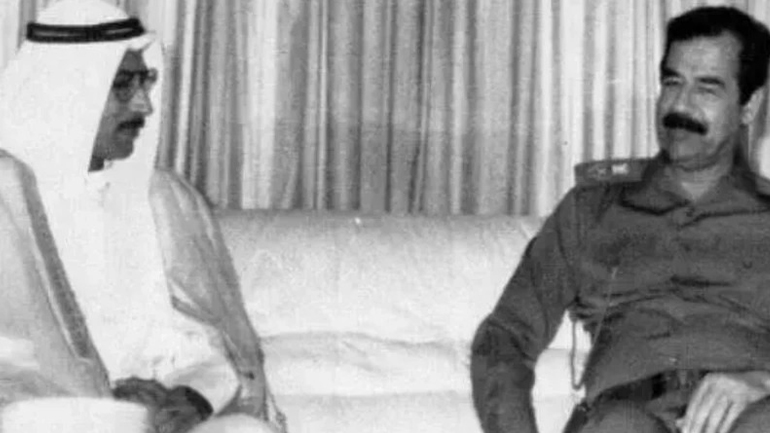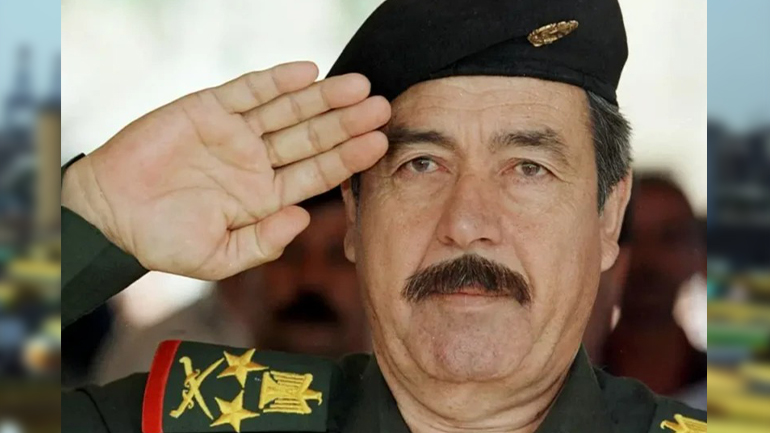

In August 1990, Iraqi forces, under orders from then-Iraqi President Saddam Hussein, invaded Kuwait, triggering a major Middle East crisis that ultimately led to the Second Gulf War. The Iraqi invasion of Kuwait was not entirely unexpected. Tensions had been building for some time, driven by underlying political and economic factors between Iraq and Kuwait. After the end of the Iran-Iraq War in 1988, Iraq was heavily burdened by debt—especially to Gulf states that had financially supported it during the conflict. Kuwait and Saudi Arabia were the top lenders. Kuwait demanded repayment of its loans, escalating tensions. The crisis deepened further due to Iraqi accusations that Kuwait had exceeded its OPEC oil production quotas, which caused a drop in global oil prices and led to a reduction in Iraq's revenue. Iraq also accused Kuwait of stealing oil from the shared Rumaila oil field. Amid this growing tension, Saddam Hussein decided to invade Kuwait. On the morning of August 2, 1990, around 100,000 Iraqi troops, along with tanks, helicopters, and trucks, crossed into Kuwaiti territory. At that time, Iraq’s military was considered the fourth-largest army in the world. Within just an hour, Iraqi forces reached Kuwait City, and by noon, Iraqi tanks had surrounded the royal Dasman Palace. By that point, the Emir of Kuwait had fled to Saudi Arabia, leaving behind his half-brother, Sheikh Fahad Al-Ahmed Al-Sabah, in his place. Upon seeing the Sheikh, Iraqi soldiers shot him dead. After securing control of the country, Saddam appointed his cousin, Ali Hassan al-Majid, as the military governor of Kuwait.

Saddam Hussein with Alaa Hussein Ali, who headed the interim government of Kuwait.
To justify their occupation of Kuwait, Iraqi authorities swiftly began taking measures to legitimize their presence. One of the earliest steps was the creation of a new political entity called the Republic of Kuwait. Just two days after taking control of the country, on August 4, 1990, Saddam Hussein announced the establishment of this new republic. According to Raja Hassan Manawi’s book “Kuwait: Invasion and Liberation”, Saddam claimed that this new Republic of Kuwait was “governed by a free and popular revolution.” According to analysts and historians, the announcement was part of Saddam Hussein’s strategy to buy time. Rather than declaring immediate annexation, the Iraqi regime portrayed the situation as an internal revolution in Kuwait, suggesting that the Kuwaiti people had overthrown their government. From the very first day, Iraqi propaganda and media outlets used this narrative to justify the invasion. The so-called Republic of Kuwait’s government included nine former Kuwaiti military officers who were either collaborating with the Ba'athist regime in Iraq or were later labeled as such. Colonel Alaa Hussein Ali Al-Khafaji Al-Jaber was appointed Prime Minister, Commander-in-Chief of the Armed Forces, Defense Minister, and Interior Minister. Other key figures included Lieutenant Colonel Waleed Saud Muhammad Abdullah as Foreign Minister, Lieutenant Colonel Fouad Hussein Ahmad as Finance Minister, Major Fadel Haider Al-Wafiqi as Minister of Information and Transport, and Lieutenant Colonel Hussein Dehiman Al-Shammari as Minister of Social Affairs. Manawi’s book notes that Alaa Hussein was born in Kuwait in 1948 and joined the Ba'ath Party during his time at Baghdad University. He was a former officer in the Kuwaiti military. Under Iraqi control, Kuwaiti state television aired a video statement from Alaa Hussein announcing the formation of the new government and appealing to the Kuwaiti public to cooperate with the new leadership. The puppet government announced several revolutionary decisions, such as the nationalization of Western companies, confiscation of the ruling family's assets, dissolution of the Kuwaiti National Assembly, the transformation of the Emirate of Kuwait into a republic, and granting citizenship to all Arab residents then living in Kuwait.
This interim government had no real authority and was little more than a symbolic puppet regime. Many believed that the Iraqi government used it merely as a tool to justify the annexation of Kuwait to the international community. The Kuwaiti public rejected this regime, and the Kuwaiti opposition also refused to cooperate with it. The government lasted only four days, as Saddam Hussein officially announced the annexation of Kuwait into Iraq on August 8, 1990. He claimed that the interim government had formally requested integration with Iraq, rendering its existence both legally and practically meaningless. On August 28, 1990, a decree was issued establishing Kuwait as Iraq’s 19th province, and Aziz Saleh Al-Numan was appointed as the Governor of Kuwait. After the dissolution of the interim government, Saddam Hussein issued a decree appointing Alaa Hussein Ali as Deputy Prime Minister of Iraq, while the remaining ministers were made advisors to the Presidential Council. Thus, Kuwait was officially incorporated into Iraq, and Iraqi forces began enforcing Iraqi law across the country. This included changes to the school curriculum, currency, and the banning of Kuwaiti newspapers. Foreign embassies in Kuwait were shut down, and many diplomats were expelled. Harsh restrictions were imposed on the local population, with violence, arrests, and executions used to instill fear. The military presence dominated daily life throughout Kuwait. Many historians and political analysts have argued that the announcement of the Republic of Kuwait was nothing more than a political maneuver and part of Iraq’s strategic deception designed to buy time under growing international pressure. The Iraqi leadership knew that an immediate and open declaration of annexation would provoke a strong global backlash, so it opted to portray the event as a popular internal revolution, followed by a request to join Iraq.

Ali Hassan Al-Majid takes office as Governor of Kuwait
The United Nations condemned Iraq’s invasion of Kuwait, and sanctions on Iraq began to be imposed on August 6, 1990. On November 29, the UN Security Council passed Resolution 678, authorizing the use of force against Iraq if it did not withdraw from Kuwait by January 15, 1991. Arab diplomatic efforts to resolve the crisis failed. The UN Secretary-General met with Iraqi President Saddam Hussein, but was unable to persuade him to negotiate a withdrawal. On January 9, 1991, a crucial meeting between U.S. Secretary of State James Baker and Iraqi Foreign Minister Tariq Aziz also failed. Following that, the U.S. Congress voted on January 12 in favor of a resolution to initiate war against Iraq. Soon after, a military campaign led by a 34-nation international coalition—headed by the United States—was launched to liberate Kuwait. This campaign began on January 16, 1991, under the codename “Operation Desert Storm.” By February of the same year, Kuwait had been fully liberated, and Iraqi forces, in retreat, set fire to oil wells as a scorched-earth tactic. On March 14, 1991, Kuwait’s Emir Sheikh Jaber Al-Ahmad Al-Sabah returned to his homeland, marking the restoration of Kuwaiti sovereignty.
After the liberation of Kuwait, members of the Iraq-backed interim government, except for Alaa Hussein Ali, returned to the country on April 27, 1991, and immediately surrendered themselves to the Kuwaiti authorities. They were handed over to the Kuwaiti State Security Investigation Department, which completed its investigation on May 15, 1991. On September 9, 1991, Kuwait’s then Minister of Justice announced the closure of the interim government’s file, stating that the investigations were complete and revealed that the members had been subjected to physical and psychological torture. According to Raja Hassan Manawi’s book "Kuwait: Invasion and Liberation", these individuals were later reinstated at the Kuwaiti Ministry of Defense. Alaa Hussein Ali, who had served as head of the puppet government, fled Iraq in 1998, eventually reaching Norway via Turkey. In 2000, he was tried in Kuwait on high treason charges, where he was initially sentenced to death, but the sentence was later commuted to life imprisonment. During his trial, Alaa Hussein told judges that he had been forced to lead the puppet regime under threats from Iraqi officials, who had allegedly detained and threatened to kill his family. He further stated that he did not know why the Iraqis had chosen him out of hundreds of prisoners of war to lead the so-called Republic of Kuwait. In September of the previous year, Kuwait officially revoked Alaa Hussein’s citizenship. Despite lasting only four days, the Republic of Kuwait left a lasting psychological and political impact and remains a bitter memory in the Kuwaiti national consciousness.
Powered by Froala Editor